Abstract
Antigen peptide fn20 representing Friend murine leukemia virus env122-141 (DEPLTSLTPRCNTAWNRLKL) is recognized by two independent Friend virus-induced, FBL-3 tumor-specific helper T-cell (Th) clones. We isolated more Th clones from mice immunized with fn20 peptide. We examined the fine structure of the peptide required to activate a large group of fn20-specific Th clones. A systematic analysis of peptides of decreasing lengths eliciting Th proliferation defined the minimum core length as 13 amino acids (LTSLTPRCNTAWN). Functional proliferation and competition assays with variant peptides with alanine substitutions permitted the assignment of five peptide residues in two major histocompatibility complex-interacting and three T-cell-receptor-interacting sites. Th clones were different in their reactivities toward peptides of various lengths and the variant peptides.
Full text
PDF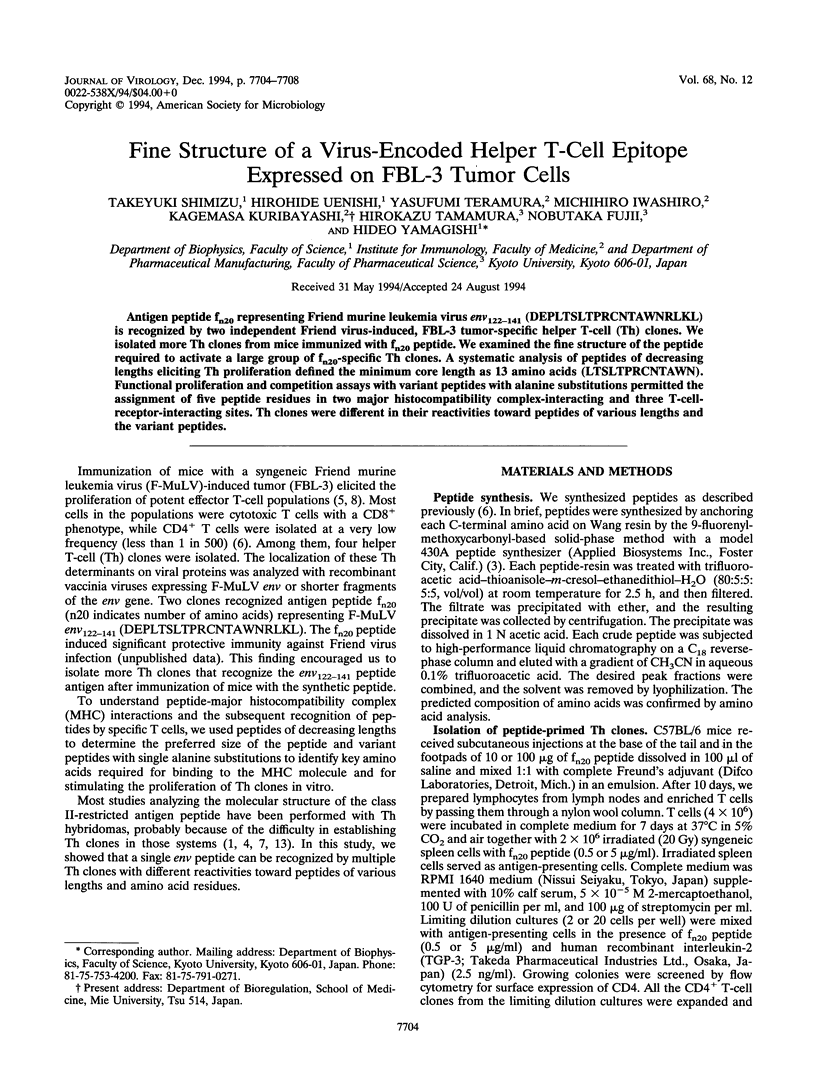
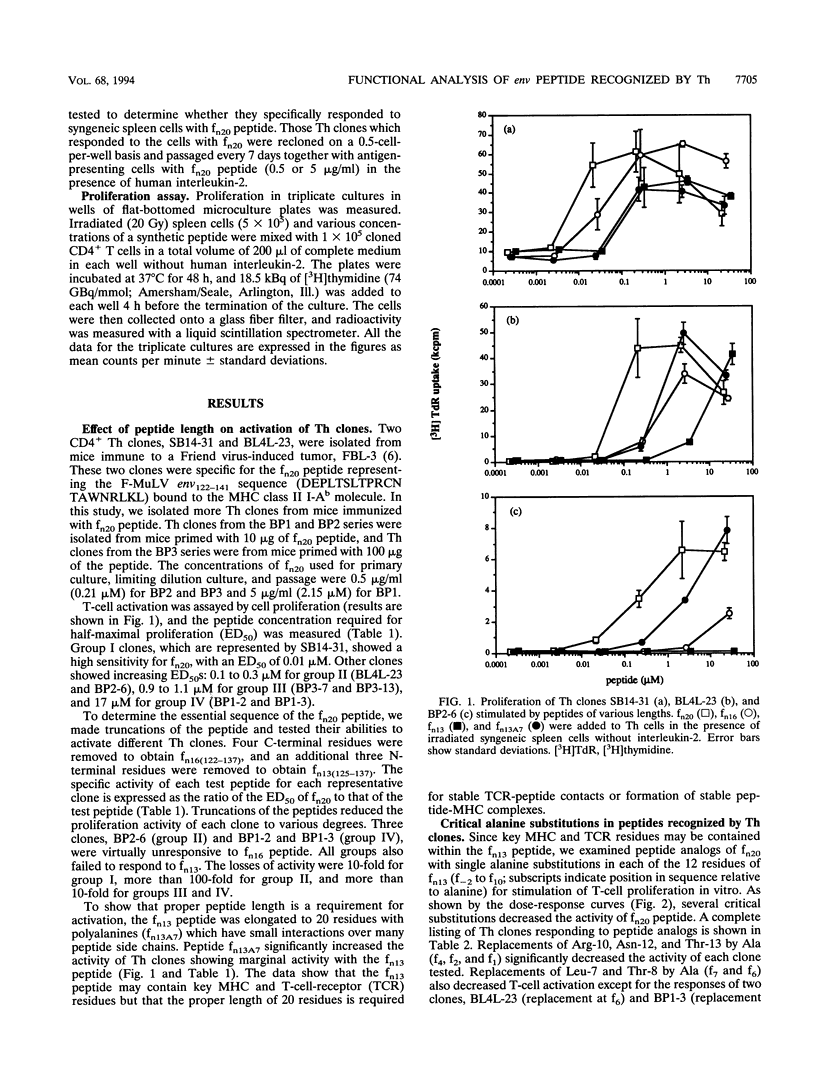
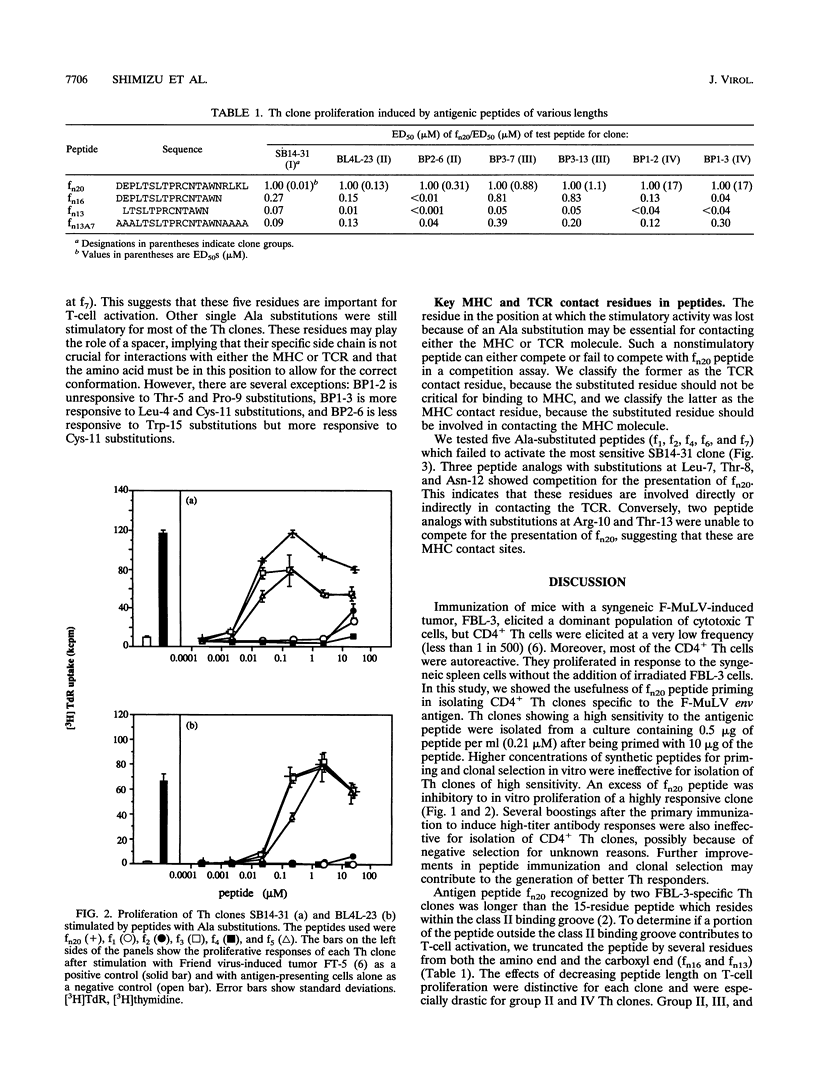
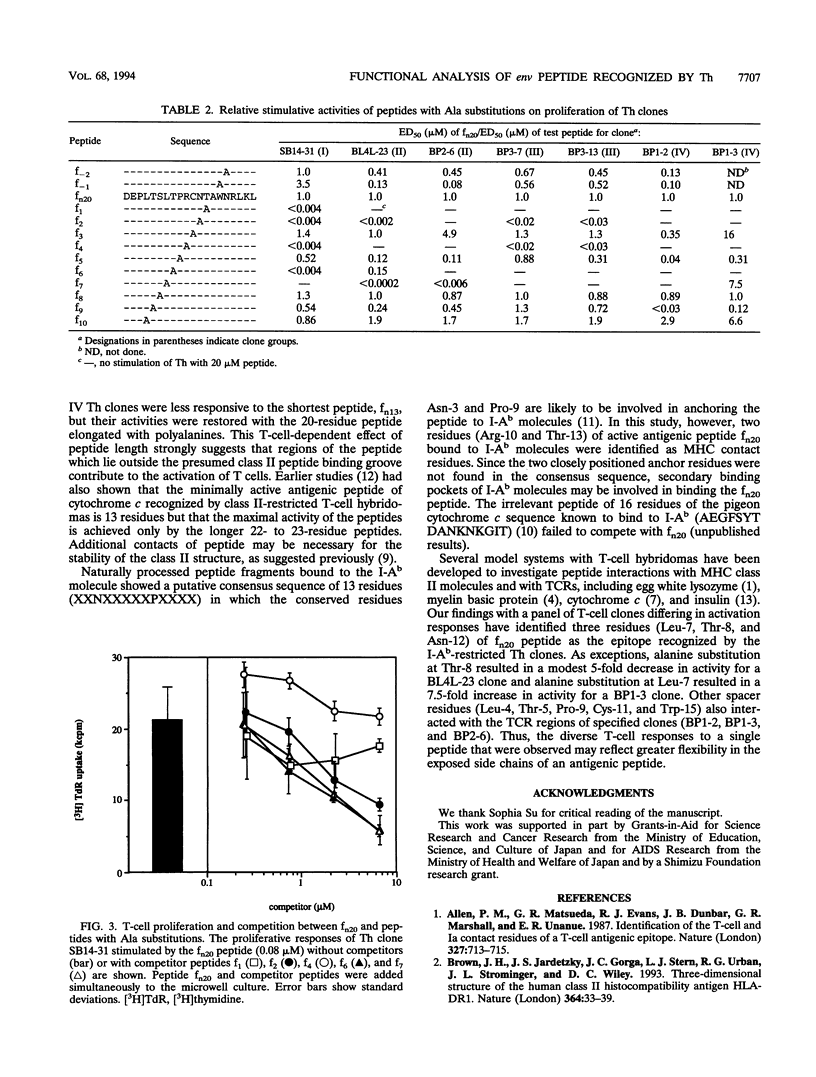
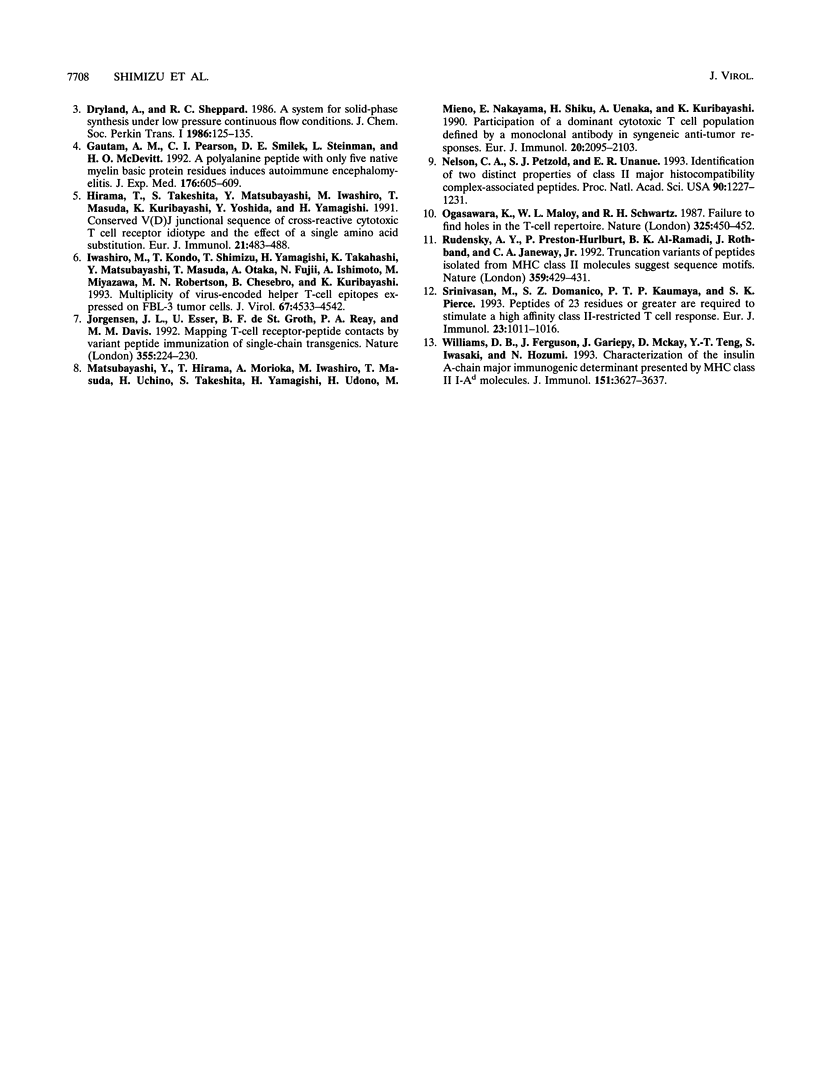
Selected References
These references are in PubMed. This may not be the complete list of references from this article.
- Allen P. M., Matsueda G. R., Evans R. J., Dunbar J. B., Jr, Marshall G. R., Unanue E. R. Identification of the T-cell and Ia contact residues of a T-cell antigenic epitope. 1987 Jun 25-Jul 1Nature. 327(6124):713–715. doi: 10.1038/327713a0. [DOI] [PubMed] [Google Scholar]
- Brown J. H., Jardetzky T. S., Gorga J. C., Stern L. J., Urban R. G., Strominger J. L., Wiley D. C. Three-dimensional structure of the human class II histocompatibility antigen HLA-DR1. Nature. 1993 Jul 1;364(6432):33–39. doi: 10.1038/364033a0. [DOI] [PubMed] [Google Scholar]
- Gautam A. M., Pearson C. I., Smilek D. E., Steinman L., McDevitt H. O. A polyalanine peptide with only five native myelin basic protein residues induces autoimmune encephalomyelitis. J Exp Med. 1992 Aug 1;176(2):605–609. doi: 10.1084/jem.176.2.605. [DOI] [PMC free article] [PubMed] [Google Scholar]
- Hirama T., Takeshita S., Matsubayashi Y., Iwashiro M., Masuda T., Kuribayashi K., Yoshida Y., Yamagishi H. Conserved V(D)J junctional sequence of cross-reactive cytotoxic T cell receptor idiotype and the effect of a single amino acid substitution. Eur J Immunol. 1991 Feb;21(2):483–488. doi: 10.1002/eji.1830210234. [DOI] [PubMed] [Google Scholar]
- Iwashiro M., Kondo T., Shimizu T., Yamagishi H., Takahashi K., Matsubayashi Y., Masuda T., Otaka A., Fujii N., Ishimoto A. Multiplicity of virus-encoded helper T-cell epitopes expressed on FBL-3 tumor cells. J Virol. 1993 Aug;67(8):4533–4542. doi: 10.1128/jvi.67.8.4533-4542.1993. [DOI] [PMC free article] [PubMed] [Google Scholar]
- Jorgensen J. L., Esser U., Fazekas de St Groth B., Reay P. A., Davis M. M. Mapping T-cell receptor-peptide contacts by variant peptide immunization of single-chain transgenics. Nature. 1992 Jan 16;355(6357):224–230. doi: 10.1038/355224a0. [DOI] [PubMed] [Google Scholar]
- Matsubayashi Y., Hirama T., Morioka A., Iwashiro M., Masuda T., Uchino H., Takeshita S., Yamagishi H., Udono H., Mieno M. Participation of a dominant cytotoxic T cell population defined by a monoclonal antibody in syngeneic anti-tumor responses. Eur J Immunol. 1990 Sep;20(9):2095–2103. doi: 10.1002/eji.1830200931. [DOI] [PubMed] [Google Scholar]
- Nelson C. A., Petzold S. J., Unanue E. R. Identification of two distinct properties of class II major histocompatibility complex-associated peptides. Proc Natl Acad Sci U S A. 1993 Feb 15;90(4):1227–1231. doi: 10.1073/pnas.90.4.1227. [DOI] [PMC free article] [PubMed] [Google Scholar]
- Ogasawara K., Maloy W. L., Schwartz R. H. Failure to find holes in the T-cell repertoire. 1987 Jan 29-Feb 4Nature. 325(6103):450–452. doi: 10.1038/325450a0. [DOI] [PubMed] [Google Scholar]
- Rudensky AYu, Preston-Hurlburt P., al-Ramadi B. K., Rothbard J., Janeway C. A., Jr Truncation variants of peptides isolated from MHC class II molecules suggest sequence motifs. Nature. 1992 Oct 1;359(6394):429–431. doi: 10.1038/359429a0. [DOI] [PubMed] [Google Scholar]
- Srinivasan M., Domanico S. Z., Kaumaya P. T., Pierce S. K. Peptides of 23 residues or greater are required to stimulate a high affinity class II-restricted T cell response. Eur J Immunol. 1993 May;23(5):1011–1016. doi: 10.1002/eji.1830230504. [DOI] [PubMed] [Google Scholar]
- Williams D. B., Ferguson J., Gariepy J., McKay D., Teng Y. T., Iwasaki S., Hozumi N. Characterization of the insulin A-chain major immunogenic determinant presented by MHC class II I-Ad molecules. J Immunol. 1993 Oct 1;151(7):3627–3637. [PubMed] [Google Scholar]


